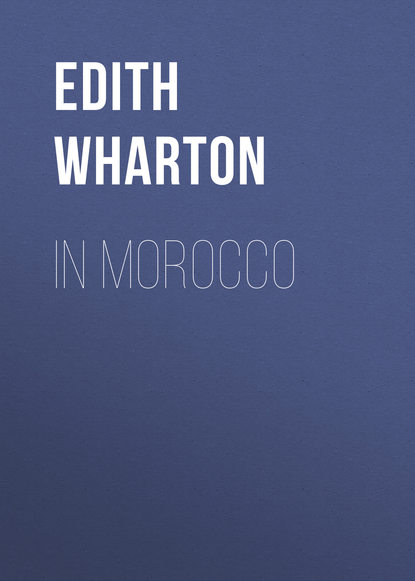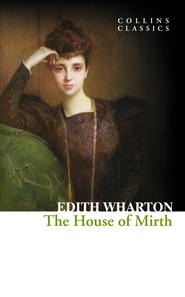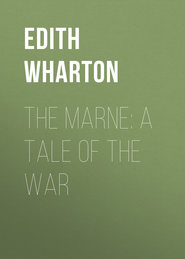По всем вопросам обращайтесь на: info@litportal.ru
(©) 2003-2024.
✖
In Morocco
Настройки чтения
Размер шрифта
Высота строк
Поля
III
FEZ ELBALI
The distances in Fez are so great and the streets so narrow, and in some quarters so crowded, that all but saints or humble folk go about on mule-back.
In the afternoon, accordingly, the pink mules came again, and we set out for the long tunnel-like street that leads down the hill to the Fez Elbali.
"Look out—'ware heads!" our leader would call back at every turn, as our way shrank to a black passage under a house bestriding the street, or a caravan of donkeys laden with obstructive reeds or branches of dates made the passers-by flatten themselves against the walls.
On each side of the street the houses hung over us like fortresses, leaning across the narrow strip of blue and throwing out great beams and buttresses to prop each other's bulging sides. Windows there were none on the lower floors; only here and there an iron-barred slit stuffed with rags and immemorial filth, from which a lean cat would suddenly spring out, and scuttle off under an archway like a witch's familiar.
Some of these descending lanes were packed with people, others as deserted as a cemetery; and it was strange to pass from the thronged streets leading to the bazaars to the profound and secretive silence of a quarter of well-to-do dwelling-houses, where only a few veiled women attended by negro slaves moved noiselessly over the clean cobblestones, and the sound of fountains and runnels came from hidden courtyards and over garden-walls.
This noise of water is as characteristic of Fez as of Damascus. The Oued Fez rushes through the heart of the town, bridged, canalized, built over, and ever and again bursting out into tumultuous falls and pools shadowed with foliage. The central artery of the city is not a street but a waterfall; and tales are told of the dark uses to which, even now, the underground currents are put by some of the dwellers behind the blank walls and scented gardens of those highly respectable streets.
The crowd in Oriental cities is made up of many elements, and in Morocco Turks, Jews and infidels, Berbers of the mountains, fanatics of the confraternities, Soudanese blacks and haggard Blue Men of the Souss, jostle the merchants and government officials with that democratic familiarity which goes side by side with abject servility in this land of perpetual contradictions. But Fez is above all the city of wealth and learning, of universities and counting-houses, and the merchant and the oulama[11 - Learned man, doctor of the university.]—the sedentary and luxurious types—prevail.
The slippered Fazi merchant, wrapped in white muslins and securely mounted on a broad velvet saddle-cloth anchored to the back of a broad mule, is as unlike the Arab horseman of the desert as Mr. Tracy Tupman was unlike the Musketeers of Dumas. Ease, music, money-making, the affairs of his harem and the bringing-up of his children, are his chief interests, and his plump pale face with long-lashed hazel eyes, his curling beard and fat womanish hands, recall the portly potentates of Hindu miniatures, dreaming among houris beside lotus-tanks.
These personages, when they ride abroad, are preceded by a swarthy footman, who keeps his hand on the embroidered bridle; and the government officers and dignitaries of the Makhzen[12 - The Sultan's government.] are usually escorted by several mounted officers of their household, with a servant to each mule. The cry of the runners scatters the crowd, and even the panniered donkeys and perpetually astonished camels somehow contrive to become two-dimensional while the white procession goes by.
Then the populace closes in again, so quickly and densely that it seems impossible it could ever have been parted, and negro water-carriers, muffled women, beggars streaming with sores, sinewy and greasy "saints," Soudanese sorcerers hung with amulets made of sardine-boxes and hares'-feet, long-lashed boys of the Chleuh in clean embroidered caftans, Jews in black robes and skull-caps, university students carrying their prayer-carpets, bangled and spangled black women, scrofulous children with gazelle eyes and mangy skulls, and blind men tapping along with linked arms and howling out verses of the Koran, surge together in a mass drawn by irresistible suction to the point where the bazaars converge about the mosques of Moulay Idriss and El Kairouiyin.
Seen from a terrace of the upper town, the long thatched roofing of El Attarine, the central bazaar of Fez, promises fantastic revelations of native life; but the dun-colored crowds moving through its checkered twilight, the lack of carved shop-fronts and gaily adorned coffee-houses, and the absence of the painted coffers and vivid embroideries of Tunis, remind one that Morocco is a melancholy country, and Fez a profoundly melancholy city.
Dust and ashes, dust and ashes, echoes from the gray walls, the mouldering thatch of the souks, the long lamentable song of the blind beggars sitting in rows under the feet of the camels and asses. No young men stroll through the bazaar in bright caftans, with roses and jasmine behind their ears, no pedlars offer lemonade and sweetmeats and golden fritters, no flower-sellers pursue one with tight bunches of orange-blossom and little pink roses. The well-to-do ride by in white, and the rest of the population goes mournfully in earth-color.
But gradually one falls under the spell of another influence—the influence of the Atlas and the desert. Unknown Africa seems much nearer to Morocco than to the white towns of Tunis and the smiling oases of South Algeria. One feels the nearness of Marrakech at Fez, and at Marrakech that of Timbuctoo.
Fez is sombre, and the bazaars clustered about its holiest sanctuaries form its most sombre quarter. Dusk falls there early, and oil-lanterns twinkle in the merchants' niches while the clear African daylight still lies on the gardens of upper Fez. This twilight adds to the mystery of the souks, making them, in spite of profane noise and crowding and filth, an impressive approach to the sacred places.
Until a year or two ago, the precincts around Moulay Idriss and El Kairouiyin were horm, that is, cut off from the unbeliever. Heavy beams of wood barred the end of each souk, shutting off the sanctuaries, and the Christian could only conjecture what lay beyond. Now he knows in part; for, though the beams have not been lowered, all comers may pass under them to the lanes about the mosques, and even pause a moment in their open doorways. Farther one may not go, for the shrines of Morocco are still closed to unbelievers; but whoever knows Cordova, or has stood under the arches of the Great Mosque of Kairouan, can reconstruct something of the hidden beauties of its namesake, the "Mosque Kairouan" of western Africa.
Once under the bars, the richness of the old Moorish Fez presses upon one with unexpected beauty. Here is the graceful tiled fountain of Nedjarine, glittering with the unapproachable blues and greens of ceramic mosaics; near it, the courtyard of the Fondak Nedjarine, oldest and stateliest of Moroccan inns, with triple galleries of sculptured cedar rising above arcades of stone. A little farther on lights and incense draw one to a threshold where it is well not to linger unduly. Under a deep archway, between booths where gay votive candles are sold, the glimmer of hanging lamps falls on patches of gilding and mosaic, and on veiled women prostrating themselves before an invisible shrine—for this is the vestibule of the mosque of Moulay Idriss, where, on certain days of the week, women are admitted to pray.
Moulay Idriss was not built over the grave of the Fatimite prophet, first of the name, whose bones lie in the Zerhoun above his sacred town. The mosque of Fez grew up around the tomb of his posthumous son, Moulay Idriss II, who, descending from the hills, fell upon a camp of Berbers on an affluent of the Sebou, and there laid the foundations of Fez, and of the Moroccan Empire.
Of the original monument it is said that little remains. The zaouïa[13 - Moslem monastery.] which encloses it dates from the reign of Moulay-Ismaël, the seventeenth-century Sultan of Meknez, and the mosque itself, and the green minaret shooting up from the very centre of old Fez, were not built until 1820. But a rich surface of age has already formed on all these disparate buildings, and the over-gorgeous details of the shrines and fountains set in their outer walls are blended into harmony by a film of incense-smoke, and the grease of countless venerating lips and hands.
Featureless walls of mean houses close in again at the next turn; but a few steps farther another archway reveals another secret scene. This time it is a corner of the jealously guarded court of ablutions in the great mosque El Kairouiyin, with the twin green-roofed pavilions that are so like those of the Alhambra.
Those who have walked around the outer walls of the mosque of the other Kairouan, and recall the successive doors opening into the forecourt and into the mosque itself, will be able to guess at the plan of the church of Fez. The great Almohad sanctuary of Tunisia is singularly free from parasitic buildings, and may be approached as easily as that of Cordova; but the approaches of El Kairouiyin are so built up that one never knows at which turn of the labyrinth one may catch sight of its court of fountains, or peep down the endless colonnades of which the Arabs say: "The man who should try to count the columns of Kairouiyin would go mad."
Marble floors, heavy whitewashed piers, prostrate figures in the penumbra, rows of yellow slippers outside in the sunlight—out of such glimpses one must reconstruct a vision of the long vistas of arches, the blues and golds of the mirhab,[14 - Niche in the sanctuary of mosques.] the lustre of bronze chandeliers, and the ivory inlaying of the twelfth-century minbar[15 - Movable pulpit.] of ebony and sandalwood.
No Christian footstep has yet profaned Kairouiyin, but fairly definite information as to its plan has been gleaned by students of Moroccan art. The number of its "countless" columns has been counted, and it is known that, to the right of the mirhab, carved cedar doors open into a mortuary chapel called "the mosque of the dead"—and also that in this chapel, on Fridays, old books and precious manuscripts are sold by auction.
This odd association of uses recalls the fact that Kairouiyin is not only a church but a library, the University of Fez as well as its cathedral. The beautiful Medersas with which the Merinids adorned the city are simply the lodging-houses of the students; the classes are all held in the courts and galleries adjoining the mosque.
El Kairouiyin was originally an oratory built in the ninth century by Fatmah, whose father had migrated from Kairouan to Fez. Later it was enlarged, and its cupola was surmounted by the talismans which protect sacred edifices against rats, scorpions and serpents; but in spite of these precautions all animal life was not successfully exorcised from it. In the twelfth century, when the great gate Ech Chemmâïn was building, a well was discovered under its foundations. The mouth of the well was obstructed by an immense tortoise; but when the workmen attempted to take the tortoise out she said: "Burn me rather than take me away from here." They respected her wishes and built her into the foundations; and since then women who suffer from the back-ache have only to come and sit on the bench above the well to be cured.
The actual mosque, or "praying-hall," is said to be formed of a rectangle or double cube of 90 metres by 45, and this vast space is equally divided by rows of horseshoe arches resting on whitewashed piers on which the lower part is swathed in finely patterned matting from Salé. Fifteen monumental doorways lead into the mosque. Their doors are of cedar, heavily barred and ornamented with wrought iron, and one of them bears the name of the artisan, and the date 531 of the Hegira (the first half of the twelfth century). The mosque also contains the two halls of audience of the Cadi, of which one has a graceful exterior façade with coupled lights under horseshoe arches; the library, whose 20,000 volumes are reported to have dwindled to about a thousand; the chapel where the Masters of the Koran recite the sacred text in fulfilment of pious bequests; the "museum" in the upper part of the minaret, wherein a remarkable collection of ancient astronomical instruments is said to be preserved; and the mestonda, or raised hall above the court, where women come to pray.
But the crown of El Kairouiyin is the Merinid court of ablutions. This inaccessible wonder lies close under the Medersa Attarine, one of the oldest and most beautiful collegiate buildings of Fez; and through the kindness of the Director of Fine Arts, who was with us, we were taken up to the roof of the Medersa and allowed to look down into the enclosure.
It is so closely guarded from below that from our secret of vantage we seemed to be looking down into the heart of forbidden things. Spacious and serene the great tiled cloister lay beneath us, water spilling over from a central basin of marble with a cool sound to which lesser fountains made answer from under the pyramidal green roofs of the twin pavilions. It was near the prayer-hour, and worshippers were flocking in, laying off their shoes and burnouses, washing their faces at the fountains and their feet in the central tank, or stretching themselves out in the shadow of the enclosing arcade.
This, then, was the famous court "so cool in the great heats that seated by thy beautiful jet of water I feel the perfection of bliss"—as the learned doctor Abou Abd Allah el Maghili sang of it; the court in which the students gather from the adjoining halls after having committed to memory the principals of grammar in prose and verse, the "science of the reading of the Koran," the invention, exposition and ornaments of style, law, medicine, theology, metaphysics and astronomy, as well as the talismanic numbers, and the art of ascertaining by calculation the influences of the angels, the spirits and the heavenly bodies, "the names of the victor and the vanquished, and of the desired object and the person who desires it."
Such is the twentieth-century curriculum of the University of Fez. Repetition is the rule of Arab education as it is of Arab ornament. The teaching of the University is based entirely on the mediæval principle of mnemonics; and as there are no examinations, no degrees, no limits to the duration of any given course, nor is any disgrace attached to slowness in learning, it is not surprising that many students, coming as youths, linger by the fountain of Kairouiyin till their hair is gray. One well-known oulama has lately finished his studies after twenty-seven years at the University, and is justly proud of the length of his stay. The life of the scholar is easy, the way of knowledge is long, the contrast exquisite between the foul lanes and noisy bazaars outside and this cool heaven of learning. No wonder the students of Kairouiyin say with the tortoise: "Burn me rather than take me away."
IV
EL ANDALOUS AND THE POTTERS' FIELD
Outside the sacred precincts of Moulay Idriss and Kairouiyin, on the other side of the Oued Fez, lies El Andalous, the mosque which the Andalusian Moors built when they settled in Fez in the ninth century.
It stands apart from the bazaars, on higher ground, and though it is not horm we found it less easy to see than the more famous mosques, since the Christian loiterer in its doorways is more quickly noticed. The Fazi are not yet used to seeing unbelievers near their sacred places. It is only in the tumult and confusion of the souks that one can linger on the edge of the inner mysteries without becoming aware of attracting sullen looks; and my only impression of El Andalous is of a magnificent Almohad door and the rich blur of an interior in which there was no time to single out the details.
Turning from its forbidden and forbidding threshold we rode on through a poor quarter which leads to the great gate of Bab F'touh. Beyond the gate rises a dusty rocky slope extending to the outer walls—one of those grim intramural deserts that girdle Fez with desolation. This one is strewn with gravestones, not enclosed, but, as in most Moroccan cemeteries, simply cropping up like nettles between the rocks and out of the flaming dust. Here and there among the slabs rises a well-curb or a crumbling koubba. A solitary palm shoots up beside one of the shrines. And between the crowded graves the caravan trail crosses from the outer to the inner gate, and perpetual lines of camels and donkeys trample the dead a little deeper into the dusty earth.
This Bab F'touh cemetery is also a kind of fondak. Poor caravans camp there under the walls in a mire of offal and chicken-feathers and stripped date-branches prowled through by wolfish dogs and buzzed over by fat blue flies. Camel-drivers squat beside iron kettles over heaps of embers, sorcerers from the Sahara offer their amulets to negro women, peddlers with portable wooden booths sell greasy cakes that look as if they had been made out of the garbage of the caravans, and in and out among the unknown dead and sleeping saints circulates the squalid indifferent life of the living poor.
A walled lane leads down from Bab F'touh to a lower slope, where the Fazi potters have their baking-kilns. Under a series of grassy terraces overgrown with olives we saw the archaic ovens and dripping wheels which produce the earthenware sold in the souks. It is a primitive and homely ware, still fine in shape, though dull in color and monotonous in pattern; and stacked on the red earth under the olives, the rows of jars and cups, in their unglazed and unpainted state, showed their classical descent more plainly than after they have been decorated.
This green quiet hollow, where turbaned figures were moving attentively among the primitive ovens, so near to the region of flies and offal we had just left, woke an old phrase in our memories, and as our mules stumbled back over the graves of Bab F'touh we understood the grim meaning of the words: "They carried him out and buried him in the Potters' Field."
V
MEDERSAS, BAZAARS AND AN OASIS
Fez, for two centuries and more, was in a double sense the capital of Morocco: the centre of its trade as well as of its culture.
Culture, in fact, came to northwest Africa chiefly through the Merinid princes. The Almohads had erected great monuments from Rabat to Marrakech, and had fortified Fez; but their "mighty wasteful empire" fell apart like those that had preceded it. Stability had to come from the west; it was not till the Arabs had learned it through the Moors that Morocco produced a dynasty strong and enlightened enough to carry out the dream of its founders.
Whichever way the discussion sways as to the priority of eastern or western influences on Moroccan art—whether it came to her from Syria, and was thence passed on to Spain, or was first formed in Spain, and afterward modified by the Moroccan imagination—there can at least be no doubt that Fazi art and culture, in their prime, are partly the reflection of European civilization.
Fugitives from Spain came to the new city when Moulay Idriss founded it. One part of the town was given to them, and the river divided the Elbali of the Almohads into the two quarters of Kairouiyin and Andalous, which still retain their old names. But the full intellectual and artistic flowering of Fez was delayed till the thirteenth and fourteenth centuries. It seems as though the seeds of the new springtime of art, blown across the sea from reawakening Europe, had at last given the weltering tribes of the desert the force to create their own type of beauty.
Nine Medersas sprang up in Fez, six of them built by the princes who were also creating the exquisite collegiate buildings of Salé, Rabat and old Meknez, and the enchanting mosque and minaret of Chella. The power of these rulers also was in perpetual flux; they were always at war with the Sultans of Tlemeen, the Christians of Spain, the princes of northern Algeria and Tunis. But during the fourteenth century they established a rule wide and firm enough to permit of the great outburst of art and learning which produced the Medersas of Fez.
Until a year or two ago these collegiate buildings were as inaccessible as the mosques; but now that the French government has undertaken their restoration strangers may visit them under the guidance of the Fine Arts Department.
All are built on the same plan, the plan of Salé and Rabat, which (as M. Tranchant de Lunel[16 - In France-Maroc, No. 1.] has pointed out) became, with slight modifications, that of the rich private houses of Morocco. But interesting as they are in plan and the application of ornament, their main beauty lies in their details: in the union of chiselled plaster with the delicate mosaic work of niches and revêtements; the web-like arabesques of the upper walls and the bold, almost Gothic sculpture of the cedar architraves and corbels supporting them. And when all these details are enumerated, and also the fretted panels of cedar, the bronze doors with their great shield-like bosses, and the honeycombings and rufflings of the gilded ceilings, there still remains the general tinge of dry disintegration, as though all were perishing of a desert fever—that, and the final wonder of seeing before one, in such a setting, the continuance of the very life that went on there when the tiles were set and the gold was new on the ceilings.
For these tottering Medersas, already in the hands of the restorers, are still inhabited. As long as the stairway holds and the balcony has not rotted from its corbels, the students of the University see no reason for abandoning their lodgings above the cool fountain and the house of prayer. The strange men giving incomprehensible orders for unnecessary repairs need not disturb their meditations; and when the hammering grows too loud the oulamas have only to pass through the silk market or the souk of the embroiderers to the mosque of Kairouiyin, and go on weaving the pattern of their dreams by the fountain of perfect bliss.
One reads of the bazaars of Fez that they have been for centuries the central market of the country. Here are to be found not only the silks and pottery, the Jewish goldsmiths' work, the arms and embroidered saddlery which the city itself produces, but "morocco" from Marrakech, rugs, tent-hangings and matting from Rabat and Salé, grain baskets from Moulay Idriss, daggers from the Souss, and whatever European wares the native markets consume. One looks, on the plan of Fez, at the space covered by the bazaars; one breasts the swarms that pour through them from dawn to dusk—and one remains perplexed, disappointed. They are less "Oriental" than one had expected, if "Oriental" means color and gaiety.










